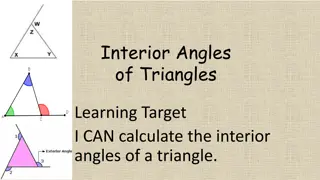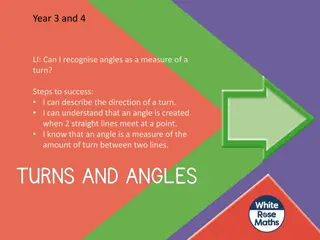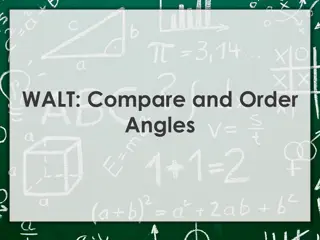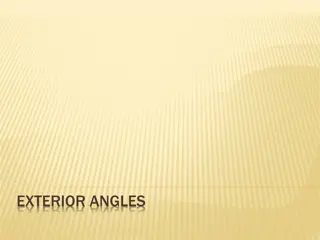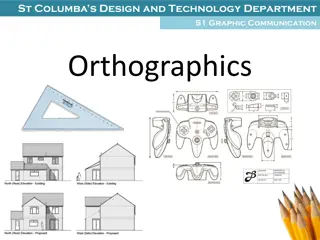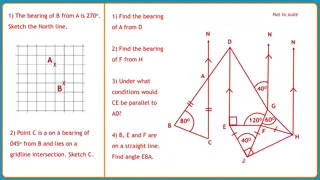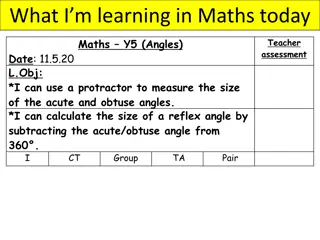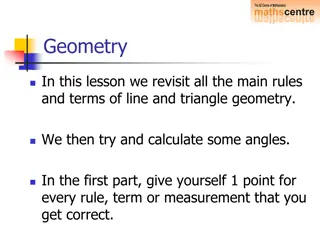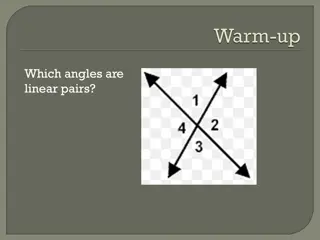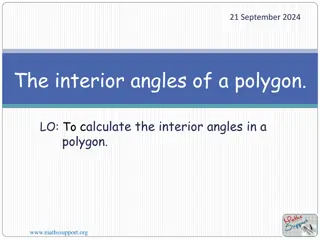Measuring and Drawing Angles: Learn with Protractor
Today's learning objectives include using a protractor to measure and draw acute and obtuse angles accurately to the nearest degree, as well as calculating angles on a straight line. Ensure proper alignment and use the markings correctly to achieve precise measurements.
Download Presentation

Please find below an Image/Link to download the presentation.
The content on the website is provided AS IS for your information and personal use only. It may not be sold, licensed, or shared on other websites without obtaining consent from the author.If you encounter any issues during the download, it is possible that the publisher has removed the file from their server.
You are allowed to download the files provided on this website for personal or commercial use, subject to the condition that they are used lawfully. All files are the property of their respective owners.
The content on the website is provided AS IS for your information and personal use only. It may not be sold, licensed, or shared on other websites without obtaining consent from the author.
E N D
Presentation Transcript
Measuring, calculating and drawing angles... Our learning objectives today To use a protractor to: a) measure acute and obtuse angles to the nearest degree. b) draw acute and obtuse angles to the nearest degree. To calculate angles on a straight line.
What do we use to help us? A protractor Here is a standard protractor like you use in the classroom.
When we use a protractor, we need to line it up correctly. You need to make sure the protractor is lined up correctly. Is this ready to measure the angle?
Were you right......................it wasnt Look for the upside down T in the middle of the straight line on your protractor. This needs to be exactly on the vertex of your angle.
We need to remember..... It doesn t matter which way round the angle is, you ALWAYS need to line the upside down T to the vertex of the angle.
Now you are ready. Read from the 0 , and follow the inner set of numbers.
Once you reach 30 you need to be careful!!! You then need to look at the 1 markings on the outer set of numbers.
What does it measure? This angle measures 35 .
Measuring, calculating and drawing angles... Remember our learning objectives today are To use a protractor to: a) measure acute and obtuse angles to the nearest degree. b) draw acute and obtuse angles to the nearest degree. To calculate angles on a straight line.
This powerpoint was kindly donated to www.worldofteaching.com http://www.worldofteaching.com is home to over a thousand powerpoints submitted by teachers. This is a completely free site and requires no registration. Please visit and I hope it will help in your teaching.



